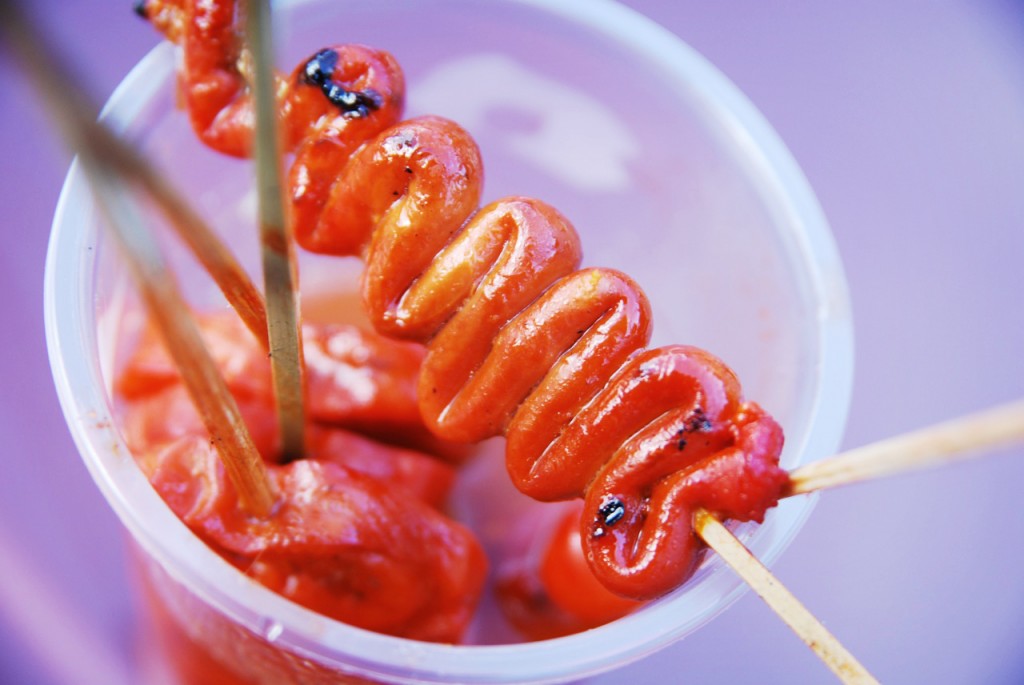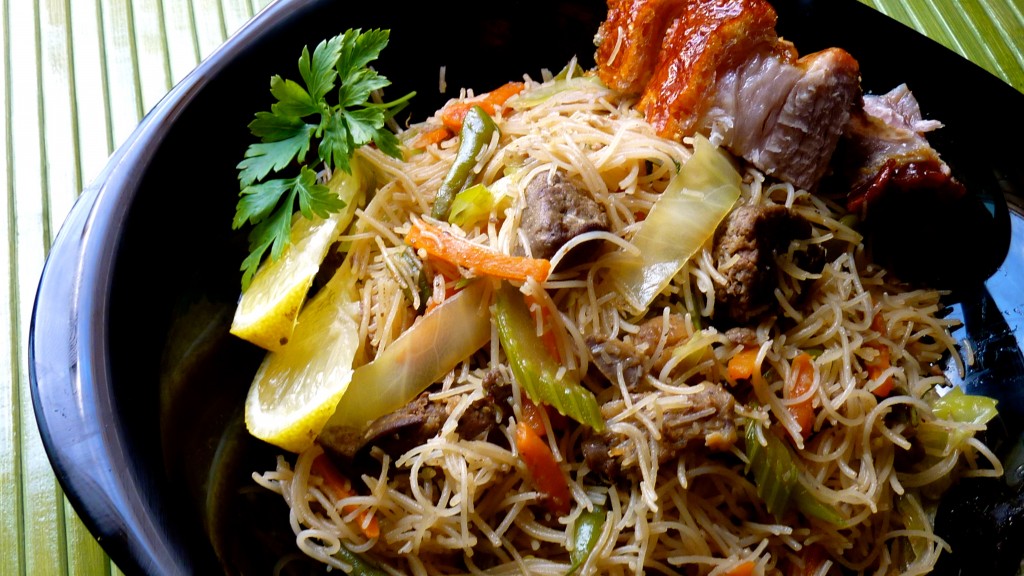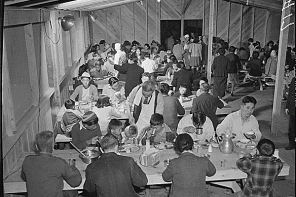For those who are not familiar with Filipino cuisine and Tagalog terminology, we’ve provided you with a cheat cheat. (Note: while Tagalog is the official language spoken in the Philippines, it by no means is the only one. There are actually many many dialects and languages: 120 to 175 languages, according to Wikipedia).
—Lisa and Irene Yadao
TAGALOG FOOD TERMINOLOGY
Busog, adj.: satiated, full
Kain tayo, phrase: Let’s eat!
Kamayan, noun: style of eating with hands instead of Western utensils
Kusina, noun: kitchen
Lasa, noun: taste or flavor
Mabuhay, phrase: term deriving from buhay, meaning life; usually used as a greeting or exclamation. Live! Cheers! Welcome!
Masarap, adj.: delicious
Merienda, noun: light meal or snack usually in the afternoon between breakfast and lunch or lunch and dinner
Pagkain, noun: food
Pinoy, noun: term for a Filipino, esp. one living abroad
Pulutan, noun: term deriving from the word “pulutin” (something that is picked up), meaning finger foods; used to describe snacks, appetizers and sometimes entrees
Salamat: Thank you
Salu-salo, noun: Get-together, party
Sariwa, adj.: fresh, new, recent (food-related)
Sawsaw, verb: to dip, as in dipping pan de sal (bread) in kape (coffee), as Americans dip Oreos in milk or Spaniards dip churros in hot chocolate
Tsibog, noun: slang for food, grub
Turo-turo, noun: Also called point-point, a no-frills type of eatery in which the pre-cooked foods are laid out (such as in a cafeteria) and chosen by pointing.
Ulam, noun: a main dish eaten with rice.
Walang anuman, phrase: You’re welcome. Nothing whatsoever. No worries.
A FEW PHILIPPINE DISHES YOU OUGHT TO KNOW
THE SWEET

Kakanin: Derived from the words “kain” (to eat) and “kanin” (rice), kakanin is an umbrella term for sweet snacks or desserts made of glutinous rice and coconut milk and slow-cooked. There are many different kinds of kakanin, the most popular of which are suman, puto, kutsinta, bibingka, and sapin-sapin.
Halo-halo: Translates to mix-mix, this is a dessert comprising shaved ice, sweet beans, jello, coconut, jackfruit, ube ice cream and evaporated milk. Add a piece of flan for good measure. Best described by The Actor’s Diet blogger and actress Lynn Chen as a structure of sweetness that you mix-mix, and famously enjoyed by Anthony Bourdain.
Ginataang bilo-bilo: Ginataang are dishes cooked in coconut milk and prepared in various ways, both savory and sweet. One of the more popular ways, ginataang bilo bilo, consists of bilo-bilo (rice balls, think mochi), coconut milk, sago pearls (think boba) and jackfruit.
Leche Flan: Same as Mexican flan, leche flan is custard made of eggs, milk, sugar and vanilla.
Ube: Purple yam with a distinct color and flavor, it is an ingredient used mostly in sweet treats and bread, such as halo-halo (topped with ube-flavored ice cream), ube puto (ube-flavored puto), ube cheesecake and pan de ube (ube-flavored bread).
THE STRANGE

Dinuguan: A stew of meat and offal cooked in a dark gravy of pig blood, garlic, vinegar and chili; also referred to as blood pudding stew.
Balut: Duck embryo that is boiled and eaten in the shell, often with salt or a sauce made of garlic and vinegar.
Isaw: Street food made from barbecued pig or chicken intestines, usually dipped in vinegar sauce.
THE STAPLES

Adobo: Meat (usually chicken or pork) slow-cooked in vinegar, soy sauce, garlic and spices. Can also be made with seafood or vegetables.
Sinigang: A stew of meat and vegetables in a sour tamarind broth. Seafood can substitute or may also be included with meat.
Lumpia: Filipino spring rolls typically made of a mixture of ground pork or beef, minced onion, carrot, and bonding egg, wrapped in crepe-thin pastry and fried. Usually eaten with vinegar and garlic dipping sauce or soy sauce. Another variation is turon, a sweet fried lumpia with slices of banana and jackfruit.
Pancit: Pancit,a dish of noodles and shrimp, fish, meat, or vegetables, and is made in a variety of ways. Pancit luglog is shaken in hot water and flavored with sauce; pancit malabon is prepared with shrimp, oysters, and squid; pancit Canton uses egg noodles; and pancit bihon is characterized by rice noodles.
Silog: any breakfast dish consisting of sinangag (garlic fried rice) and itlog (egg), the most common variations being tapsilog (with tapa), tocilog (with tocino), and longsilog (with longanisa).
Sisig: A term originating from the province of Pampanga, sisig means “to snack on something sour.” Sisig refers to a method of preparing fish and meat (usually pork) by marinating the meat in vinegar or the juice of lemon or calamansi (Philippine lime), and cooking it in three phases: boiling, broiling and grilling.
Definitions and information were compiled from Wikipedia, Tagaloglang.com, Tagalog.pinoydictionary.com, NIU Center for Southeast Asian Studies’ Filipino Food/Cuisine Glossary, FilipinoFoodLovers.com, and our nanay (mom).
+ + +
 This story is a part of Off the Menu: Asian America, a multimedia project between the Center for Asian American Media and KQED, featuring a one-hour PBS primetime special by award-winning filmmaker Grace Lee (American Revolutionary: The Evolution of Grace Lee Boggs), original stories and web content.
This story is a part of Off the Menu: Asian America, a multimedia project between the Center for Asian American Media and KQED, featuring a one-hour PBS primetime special by award-winning filmmaker Grace Lee (American Revolutionary: The Evolution of Grace Lee Boggs), original stories and web content.




